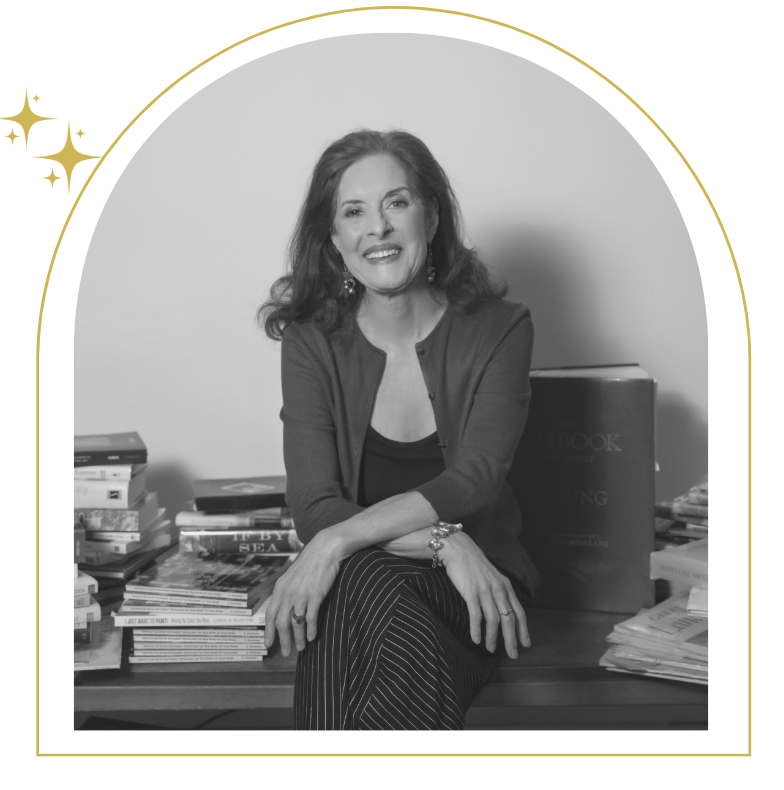A Couple of Sad, True Stories
Selling Your Art, STORY ONE:
I’m on Instagram thinking about how you are selling your art, and looking at the truly astounding roll of artwork. If a piece catches my eye, I scroll through the comments, curious as about what other artists think.
Most comments are discouraging: “Bravo,” “Beautiful,” “Love it,” and a tribe of emojis.
Once in while another artist will make an astute comment related to the art process, or a technique that captured a certain element. But this is rare. Always interesting, but rare.
Sometimes the artist, who took all the trouble to post (and posting is always a bit of trouble), will respond to the comments. And in this age of “good marketing,” no matter how banal a comment might be, a reply is di rigor.
Other times, I’ll see no replies from the artist, which is just odd.
One day, I see a post by a fan who went from Instagram to the artist’s website to buy a piece, that was sold, then returned to Instagram to ask if they could to buy something similar. Or if the artist would let them know when they do a similar piece.
Does this artist jump for joy? Look at their bank balance? Start fantasizing about new supplies?
Nope.
Yes, there were 222 comments on this piece the artist posted. And the artist replied to bland comments on either side of this direct request, yet failed to respond.
Do you want to sell your art? I wanted to ask… and then shake him!
Sad but true. Sad. Sad. Sad.

Let’s call this artist, Annie, shall we? We’re in a private coaching session and she’s just told me about one of her core collectors mentioning that she’d like to buy more art for her vacation home.
“When did this happen?” I ask.
“Oh, about six months ago,” she responds.
“And did you follow up on her comment?”
“Why, no,” Annie tells me.
“Because…?” I ask.
“Good heavens,” my client says…“I didn’t want her to think I’m bothering her!”
It’s a good thing we’re not on Zoom or my rolling eyes might have been misunderstood.
I wasn’t my rolling eyes at my client, you know, but at how often I get this specific response. At least 90% of the time I ask an artist why they haven’t followed up on a lead for a sale, it’s some variety of: I don’t want to presume/assume/bother them/have them think I’m pushy/bug them, etc.
I understand both the hesitation and the inherent instinct to be a considerate, polite person.
But, seriously, do you want to sell your art?
In truth, this is a landmine of a mindset. It’s a conditioned habit born out of a misplaced sense of politeness.
And it’s a mindset that will sabotage selling your art every darn time… which is why I roll my eyes.
When a mindset gets between you and selling your art, you have to yank out the old mindset before you can plant one that bears the juicy fruit of a dollar sign.

Our, collective, cultural go-to for selling always implies psychological coercion and manipulation to benefit the seller – the buyer be damned.
For decades, carefully calculated advertising research has backed this up where billions are spent on focus groups to get inside our heads and push us to buy, buy, buy.
In our psychological, arm-twisting commerce, we have ignored two key human conditions: genuine desire and real need.
At its core in any culture over time, commerce is the simple exchange of one benefit for another. I do need a new sofa. I do want what’s around me to be enriching.
In this culture, at this historical time, my exchange and your exchange for having these needs met is money.
Clean. Direct. Simple.
Selling Your Art First Step:
A Mindset That Supports You
Clean.
We all have our money stories. They are a combination of how we were raised, and how we’ve conditioned ourselves to experience making, saving, and spending money.
On top of that, we have industry after industry founded upon the premise, and research, that buying is a mindset to be manipulated and controlled.
As a result, we have muddied the waters around the bedrock principle of authentic value for selling your art.
Yes, value is subjective and, yes, you have responsibility for determining value for yourself.
You also have responsibility to become aware of what value means for the people who love your work (buyers and galleries included).
Direct.
If your artistic vision is paramount, and you know what your art has to offer our collective human experience, then how on Earth can someone be on the receiving end of your creative vision if you are not on the offering end?
You have to offer to sell your art before anything else. And, there’s a trick here.
Simple.
Simply put: how can someone buy your work if you are not offering to sell it?
The trick is switching your mindset away from selling your art and toward an invitation to buy your art.

Selling Your Art Second Step:
Enchant, Rinse, and Repeat
As intimidating as selling your art may seem, remember that each buyer, each collector, and each gallery dealer is, like you, first and foremost a person.
And like you, they respond best when they feel acknowledged and seen.
The most graceful way to a buyer’s heart, after they have purchased a piece of your work, is a simple, hand written, Thank You note.
The same is true for a gallery you are pursuing. Even if you haven’t broached the subject of representation, sending a hand written, Thank You note immediately after any interaction (talking informally while visiting a gallery, attending an event/opening, etc.) is a thoughtful and kind way to keep you and your art in front of interested parties.
Now especially, in our digital wasteland, old-fashioned, hand written notes stand out. They carry a forgotten ambiance, a resonance with old-fashioned courtesy and care.
Of course, you have a ready supply of envelops and note cards—with an image of your work on the front (titled + email & phone no.), blank space for writing inside, then a thumbnail of a different piece on the back along with all of your contact information.
However, once is not enough when you’re selling your art.
The research behind repetition is at the heart of all advertising and has never wavered for multiple decades.
You’d be mindful to take advantage of this simple technique for selling your art: after your first note, touch base a second time within six to eight weeks. This is long enough for someone to feel appreciated all over again, but short enough so they haven’t forgotten you.
The first note is physical, mailed to a physical address or post box. Your second note needs to be an email so you can invite the person to click on one of the following links that…
- Takes them to your most recent work.
- Takes them to a page where they can sign up for your list.
- Takes them to your most current exhibition.
Be sure to personalize the email by noting some aspect of your new work (or a website page you are directing them to) that is aligned with what you know about them.
- For your buyer: Perhaps they have an alternative space in their home, where they would have put the original piece they purchased. Except, for reasons they shared with you, that first piece wasn’t exactly right for that spot. But now, you have a piece of work that is right.
- For the gallery dealer: Perhaps draw a parallel between your work and the work of an artist they already represent—the boldness of color, the nuance of perspective, etc.
This helps them associate you with an artist they already know. For this, it’s imperative that you are accurate, thoughtful, and engaging when you draw a parallel between your work and one of their artists. One way is to invite them to reflect back to you if they also see the same connection you do.
Of course, you have a website. Of course you have a third party that keeps your email contacts organized and spam free. And of course you update the work on your website every single month – taking off old work that no longer represents the best of what you are doing now.
Selling your art is the art of repetition…
because it’s not just children who need to hear or see a consistent pattern multiple times.
It’s all of us.

Selling Your Art Third Step:
Be Connected to Commitment and Committed to Connection
Here’s a story from a US gallery dealer in the southwest:
A Canadian artist stopped to visit, portfolio in hand, and asked for representation on the spot. The dealer, however, had a full stable, so he declined, but did indicate he liked her work.
Once the artist returned home, she sent him an email with a link to one of her newest pieces.
He clicked on the link, again liked the work, and emailed back a polite note.
The next week, the artist sent a new link to new work (being prolific helps!). Again he clicked on the link, looked at the work, but did not email her back.
The next week, here came another email from the artist. This time the dealer did not click on the link and did not respond to her email.
She emailed him a new piece of work every week for an entire year. And for an entire year all the dealer did was delete her emails.
Then, something happened. The dealer lost one of his artists. He had an opening… and who did he think of first (repetition!). And who did he invite for representation (repetition!)?
Yup, that artist who didn’t for one minute worry about annoying the dealer.
Note: her emails were short, consistent, and always friendly. And, I’m sure, if he’d asked her to stop sending emails, she would have.
Plus, besides keeping her work in front of the dealer, she was also showcasing that you could keep up with gallery demand should her work prove to be a best seller. Nothing frustrate a gallery dealer more than representing an artist who can’t keep up with demand.
The point is not to duplicate this artist’s story (though, in some cases, it might be a perfect strategy), the point is to understand that…

After that, develop follow-up strategies aligned with your belief.
Which inspires others to experience the value of your work.
And, maybe, just maybe… send that email with new work once every three weeks.
————————————————————————————————–
Unswerving belief in your work is the mindset for selling your art.
The practical key for selling your art is consistent repetition.
————————————————————————————————
As for bothering someone… here’s the rest of Artist Annie’s story:
After Annie confessed that she didn’t want to bother her former collector, I suggested that she write a simple email, reference their conversation, and say that she had some new work, which might be perfect for her former collector’s vacation home, and would she like to look at it?
Turned out the collector was thrilled to hear from Annie (please, note the word “thrilled” because I do not use it lightly!).
The collector asked to see the new work and immediately purchased two more pieces for her vacation home.
Moral?
Do not over estimated nor under estimate, the art of bothering someone.
=============================================
So, when has “bothering” someone landed you exactly what you wanted?
=============================================

Whenever you’re ready to update your artist statement, or even write your first one, join my waitlist for: Writing The Artist Statement eBook & Ambitious Bundle.
It’s not enough to know what an artist statement is. You need to know how to write one!
This new 3rd edition eBook with its Ambitious Bundle takes you from head scratching to a polished, compelling artist statement. Check it out!








